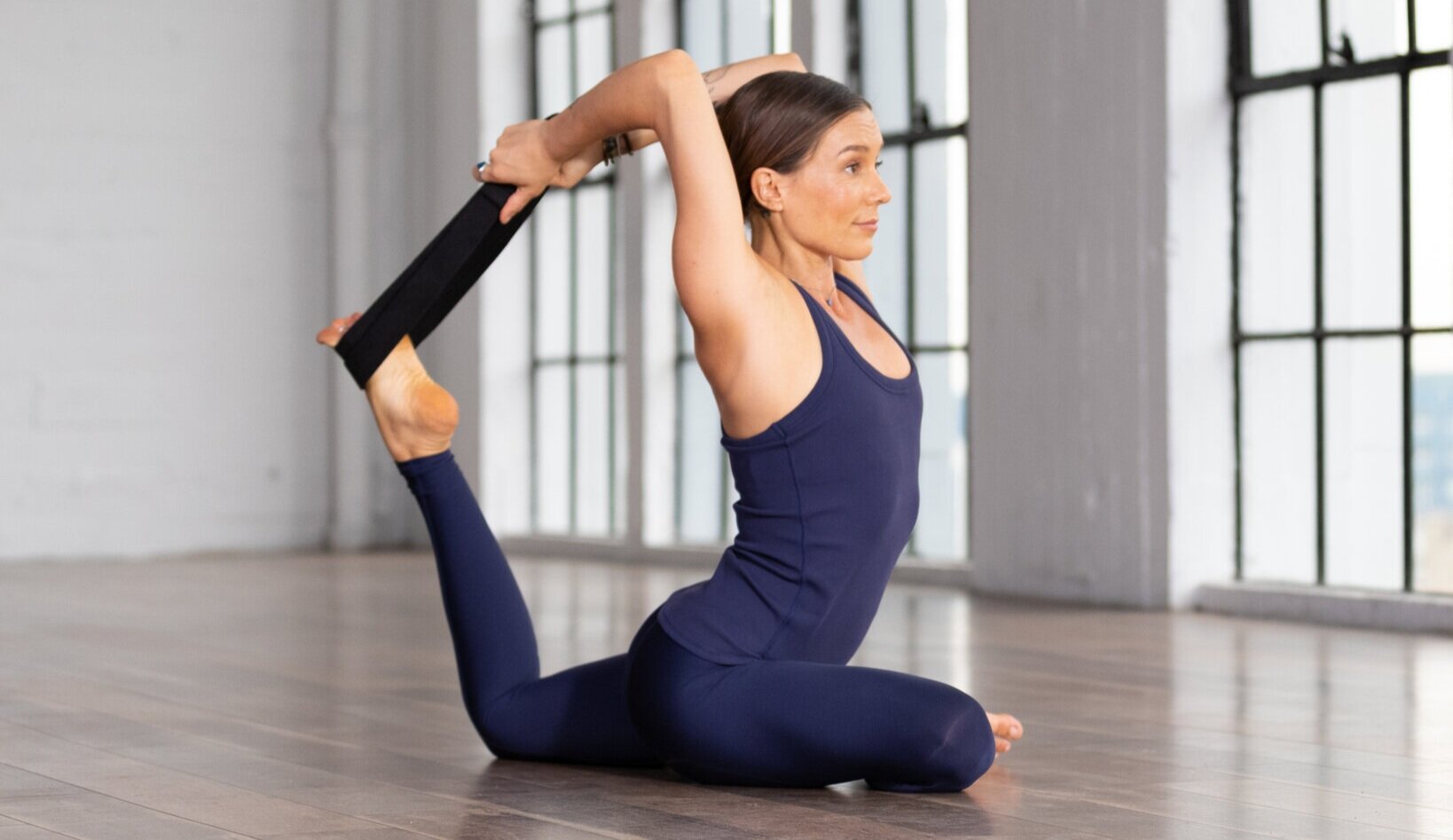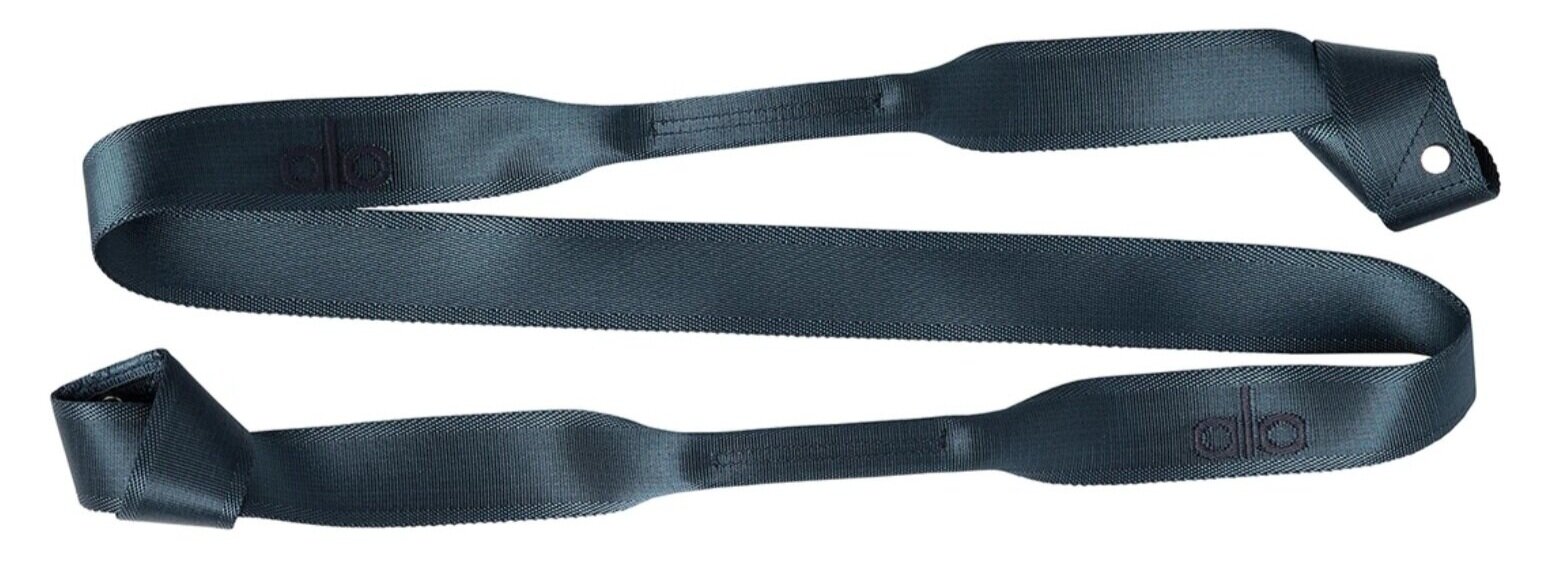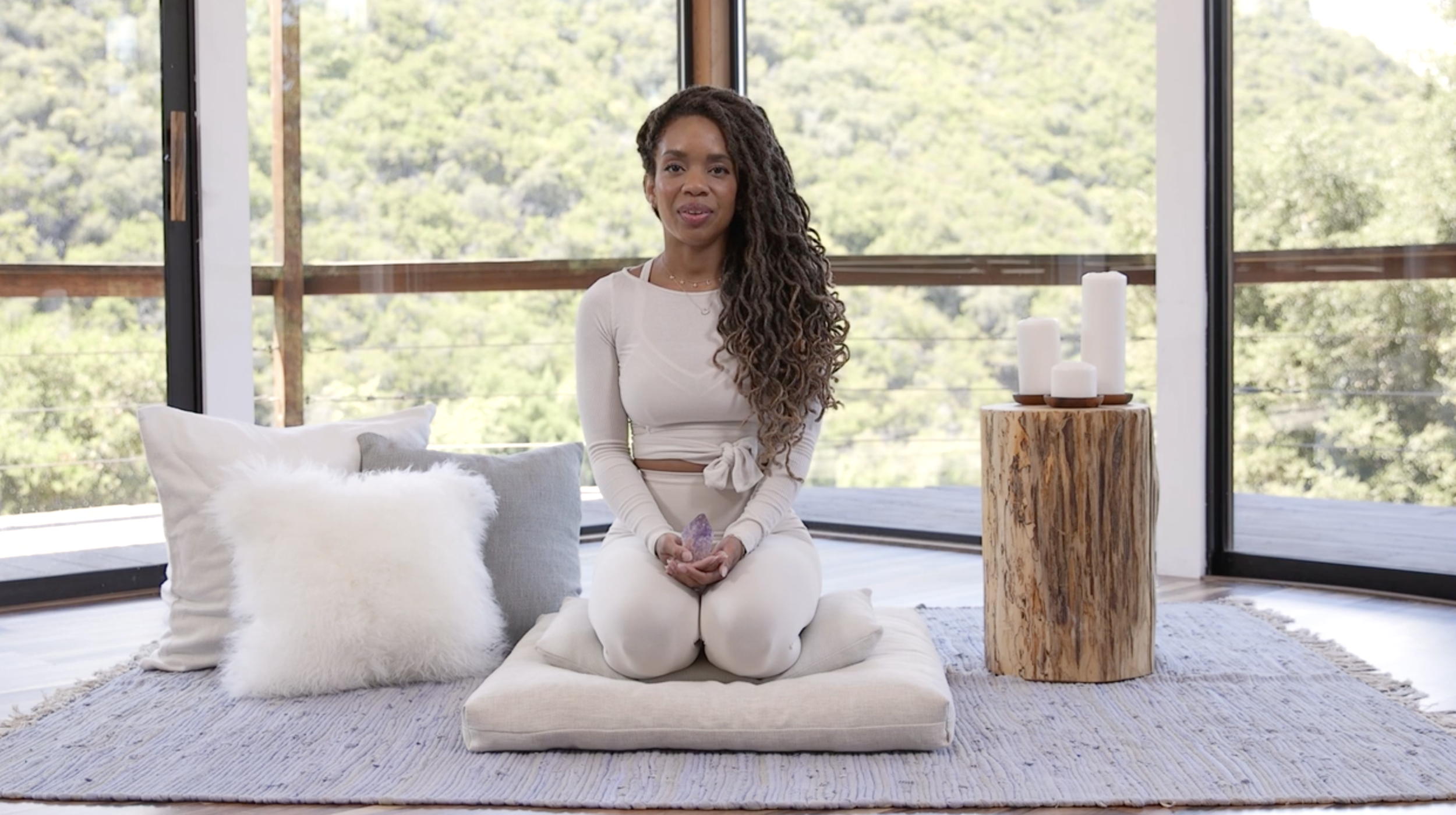Yoga Props 101
The beauty of yoga is in its simplicity. You truly don’t need much to begin to practice except yourself, appropriate clothes, and a yoga mat. However, as you immerse yourself more into the world of yoga, you’ll realize many classes use a variety of props and you may be tempted to try them for yourself.
What yoga props do I need fOR MY PRACTICE?
The bare essentials you’ll need for a yoga class are comfortable, breathable clothes that allow you to move and, in our opinion, a yoga mat. While all other yoga props and accessories are optional, many can enhance your practice by deepening your poses, providing support, and promoting proper alignment. In this guide, we’ll go over the most common yoga equipment and break down how to use each prop.
Yoga Strap
What is a yoga strap? A yoga strap, also called a yoga belt, is a prop for everyone from beginner to advanced yogis that encourages proper alignment and adds length to your poses.
Yoga strap substitutes: If you don’t have a yoga strap at home, you can use a regular belt, robe belt, tie, or durable long-sleeve shirt instead. Get creative!
How to use a yoga strap: You can use a yoga strap for lengthening, deepening, and encouraging better alignment in several different poses. Here are a few examples:
Cow Face Pose - If you have tight or tense shoulders, reaching your arms behind your back and clasping your fingers together may be a challenge. With a yoga strap, you’ll gain a bit of extra length that makes this pose more accessible and allows you to safely stretch without pain.
One-Legged King Pigeon Pose - This pose requires openness in your chest, hips, and shoulders, as well as flexibility in your back and quads. Using a strap can provide you with length to more comfortably stretch back, as well as help to ensure your hips stay in proper alignment.
Bow Pose - This heart-opening pose is a great introduction to backbends, but if your shoulders aren’t open or you have tight quads, it may be uncomfortable until you gain more flexibility. With a yoga strap, you’ll have extra length and be able to find a gentler but still effective stretch without having to grasp your feet with your hands.
Benefits of using a yoga strap:
Increases your range of motion
Deepens your stretch
Prevents injury
Promotes proper alignment without pain
A class to practice using a yoga strap: Morning Yoga For Beginners with Patrick Beach
Yoga Blocks
What are yoga blocks? Yoga blocks are lightweight blocks made commonly out of foam or cork, but can also be made of wood or bamboo. They’re used to help modify poses by bringing the floor closer to you, or can add an extra challenge to your poses depending on how you use them.
Yoga block substitutes: Yoga blocks are meant to give you height and weight, so you can find a sturdy or durable replacement around the house. Try a full water bottle or water jug, large container or canister, a heavy book, a small stool, or a box.
How to use yoga blocks: You can use yoga blocks for support and for deepening your practice in a variety of poses. Here are a few examples:
Downward Dog - In Downward Dog, you can either place the blocks under your palms to alleviate the strain on your wrists that can be common in this pose or place the blocks under your feet to deepen your pose.
Triangle Pose - If you’re looking for a bit of added lift and support in this pose, place a block under the hand that’s closest to the mat.
Reclined Hero Pose - Place a block between your shoulder blades to support you as you lean back in this heart opener.
Benefits of using yoga blocks:
Encourages proper alignment
Prevents overstretching
Makes poses more accessible
Helps you stay in the pose for longer
A class to practice using yoga blocks: Yoga Block Play with Naya Rappaport
Bolster
What is a yoga bolster? A bolster is a long cylindrical or rectangular pillow meant to support your body during yoga, especially in restorative poses.
Yoga bolster substitutes: Use pillows, couch cushions, or folded blankets to give you sturdy softness and support.
How to use a bolster: A bolster is the perfect prop for use in a restorative yoga class. Here are a few poses you can use with a bolster.
Child’s Pose - Place the bolster between your thighs and lay down on top of it, hugging the sides and letting your head turn to one side to rest as you feel your body relax.
Corpse Pose - Place the bolster under your knees to allow your legs to fully relax and melt into the floor.
Fish Pose - Position the bolster lengthwise behind your back so that it supports your upper back, neck, and head, let your arms rest at your sides and sink fully into this pose.
Benefits of using a bolster:
Supports your body
Releases tension
Encourages openness and relaxation
Opens chest and shoulders
A class to practice using a bolster: Yin/Yang Stress Relief with Ashley Galvin
Meditation Pillow
What is it? A meditation pillow ranges in size from traditional round zafu cushions to larger, rectangular zabuton mats with the purpose of supporting your body as you meditate. They can also be used like a bolster when you practice certain yoga poses.
How to use a meditation pillow: Sit cross-legged on the pillow and wiggle to the front, bringing your pelvis forward and keeping your knees dropped below your hips. You can also position the pillow under your seat as you kneel for extra support.
Benefits of using a meditation pillow:
Supports the natural curve of your lower back
Helps you maintain focus
Promotes good posture
Increases comfort
Can be used in both yoga and meditation
A class to practice using it: Clear Intuition: Amethyst Meditation with Phyllicia Bonanno
Yoga Towel
What it’s used for: A yoga towel is placed on top of your yoga mat to give you a better grip while you practice, perfect for hot or sweaty classes.
How to use a yoga towel: Place the yoga towel on top of your mat. Go for one with non-slip grips on the bottom to further prevent it from moving around as you practice. Avoid using a regular bath or beach towel as they’re often the wrong proportions and don’t offer the same benefits.
Benefits of using a yoga towel:
Prevents you and your mat from slipping
Increases grip
Absorbs sweat
Provides a barrier when using a studio mat
Yoga Mat
What is it? If there’s any yoga accessory that’s a must-have, it’s a yoga mat. Luckily, yoga doesn’t require a lot of equipment and you don’t have to use a yoga mat if you don’t want to — but, it does make your practice a lot more comfortable and easier to do. Usually made of PVC, rubber, jute, or cotton, the yoga mat’s material will define its thickness, durability, texture, and even use. Lighter mats might be better for travel or on the go, while a thick and more durable material will serve better for everyday practice.
Benefits of using a yoga mat:
Provides cushioning while you practice
Gives you traction and prevents slipping
Yoga Blanket
What is it? A yoga blanket is usually made of natural materials like wool or cotton and is used both for retaining body heat while in restorative poses such as Savasana, as well as providing support and alignment in a variety of other poses.
How to use a yoga blanket:
Cat-Cow - Place a folded blanket under your knees for extra cushion.
Corpse Pose - Lay a blanket over you to stay warm in Savasana.
Bound Angle Pose - Sit on a folded blanket to gain height during this pose and help keep your spine straight.
Benefits of using a yoga blanket:
They’re a versatile yoga prop with many uses
Promotes proper alignment
Relieves stress on the joints
Helps absorb sweat
Provides cushion
A class to practice using a yoga blanket: Stress Relief with Briohny Smith
Try all these classes and more for free with a 14-day trial to Alo Moves.









